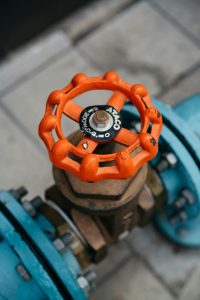Table of Contents
ToggleAs the name goes, this type of ball valve has three ways or ports. There are two types of 3-way ball valves: L-port and T-port. These valves can send fluids one way, shut off flow completely, or mix two different flows. The name refers to the shape of the opening in the ball. The two different types of valves serve different purposes.
A three-way ball valve has two different types of mechanisms. In the L-pattern, the handle rotates at an angle with the valve’s port plane. In the T-pattern, the stem slot is located on the top, which is only applicable to a horizontal three-way ball valve.
Besides its three-way properties, this type of valve is a versatile choice for a wide variety of applications. Its unique design allows it to control and mix three different flow paths at once.
If you want to know more about the three-way ball valve, continue reading this article.
What is a 3-Way Ball Valve?
A 3-Way ball valve is a type of ball valve with three ports. The two main types of 3-way ball valves are, T-Port and L-Port. This type of valve is ideal for flow control and diverting. They are also very compact and light, which makes them extremely useful in vacuum systems. The 3-Way ball valve is available in different sizes, which makes it suitable for different applications.
Three-way ball valves can divert or split flow in different directions or block one flow while allowing another to pass through. Some 3-way ball valves have two distinct flow paths, L-pattern, and T-pattern, while others have a mixer. The T-pattern is also sometimes called a “180-degree” ball valve. Whichever way you use a 3-way ball valve, it is crucial to understand what it can do for your system.
Three-way ball valves are an excellent choice for any number of applications, as they eliminate the need for two valves. As such, you can mix and co-mingle liquids and gases in one valve. The T-port option is ideal for mixing applications, while the “L” port serves as divert.
How Does a 3-Way Ball Valve Work?
If you’re wondering how a 3-way ball valve works, read on. There are two main types of 3-way ball valves, which operate differently. Essentially, 3-way valves work in an “L” or “T” pattern. They allow fluid to flow through one port while shutting off the other. Flow can also be diverted from one port to the other. This makes them a versatile valve that can perform a variety of functions. Learn how they work and why they’re useful.
The three-way ball valve splits media into two directions, blocking one flow while allowing another. It can be an upright or L-pattern valve. Both patterns contain different types of ball configurations. The L-pattern ball valve has a port in the middle. The T-pattern valve is also called a mixing or 180-degree ball valve. If you’re unsure of how a three-way ball valve works, read on.
A 3-way ball valve can control the flow of fluids in several ways. They can be used to mix two or more fluids, divert flow to another, or stop one flow and allow another to flow. These valves are designed to be economical and easy to install.










